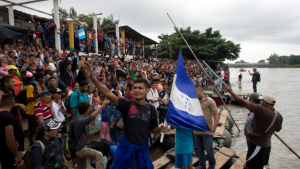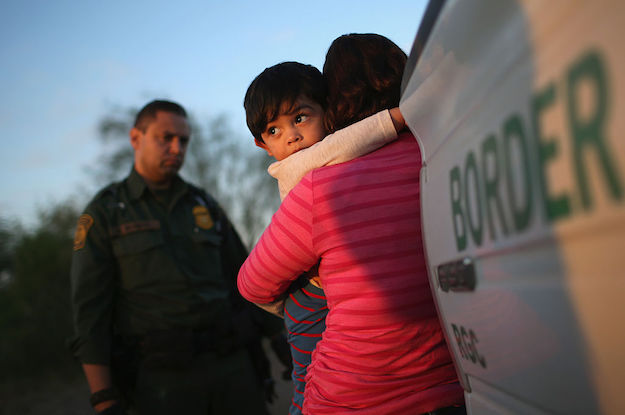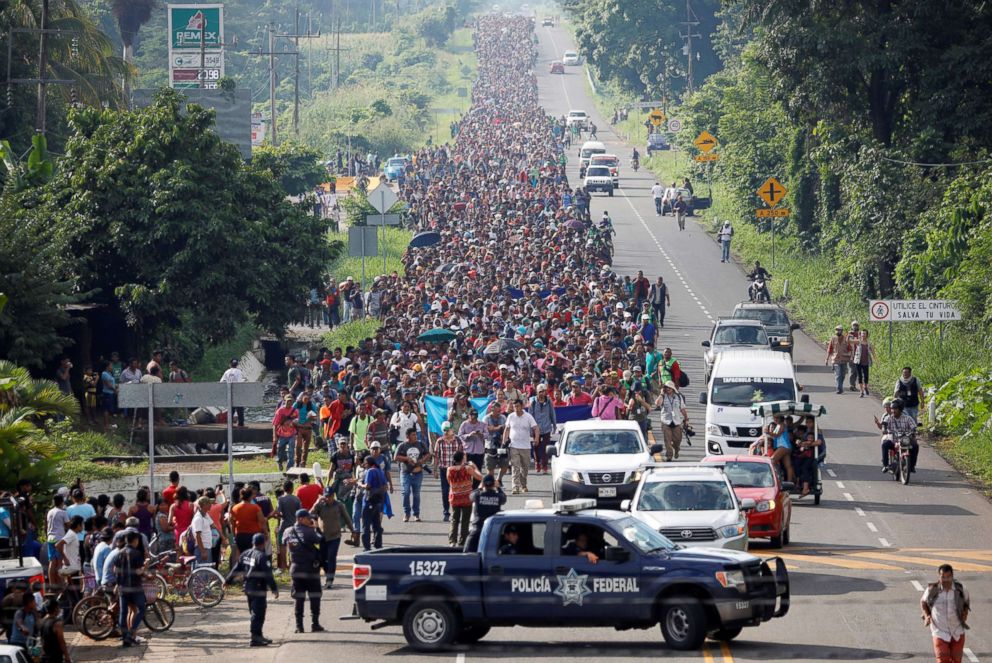Mexico’s southern border is currently undergoing an immigration crisis. Migrants seeking solace and refuge from Guatemala, Honduras, El Salvador, and other Central and South American countries are traversing their way North trying to make it to America or at least into Mexico.
Conflicting Reports
Around 3,000 migrants have collectively caravanned to the border, however Time magazine reported that caravan has reached a third of its original size on Saturday when
“its remaining members woke up on a bridge that divides the borders of Guatemala and Mexico and waited to get past a crossing guarded by hundreds of Mexican federal police”.
However, Sunday morning (Oct. 21) Washington Post reports differently, “A migrant caravan whose numbers swelled overnight to an estimated 5,000 people at the Mexico-Guatemala border has resumed its march toward the U.S. frontier”. In the same report they claim, “It’s not immediately clear where the additional travelers materialized from”.
On The Mexican Boarder
 The Mexican police have been somewhat successful at blockading the mass, but hundreds of illegals have already crossed through. If the situation worsens, President Trump has commented on the topic with a plan. The National Public Radio (NRP) reported on Friday, “He’s thanked Mexico for its efforts to stop the so-called caravan. He has also said he will close the U.S. border to these migrants”. This threat is preemptive and has not yet needed to be taken into action. The United Nation (U.N) is currently addressing the best way for their intervention to take place.
The Mexican police have been somewhat successful at blockading the mass, but hundreds of illegals have already crossed through. If the situation worsens, President Trump has commented on the topic with a plan. The National Public Radio (NRP) reported on Friday, “He’s thanked Mexico for its efforts to stop the so-called caravan. He has also said he will close the U.S. border to these migrants”. This threat is preemptive and has not yet needed to be taken into action. The United Nation (U.N) is currently addressing the best way for their intervention to take place.
The United Nations
As of now the U.N. has only made vague statements concerning the individuals and the treatment they should be given with concerns to their human rights. Friday the Washington Post had this to say, “The U.N. special investigator on the human rights of migrants has a message for the Mexican and U.S. governments: Respect the human rights of every person on the caravan heading from Central America and consider each case individually”.
The United Nations has been aware of Central and South American growing immigration crisis for quite a while, though seemingly has not stepped in preventatively. As early as May of 2018 the U.N. reported, “The number of people fleeing violence and persecution from States in Central America, including Guatemala, El Salvador and Honduras, has risen by nearly 60 per cent in the space of just a year, the UN refugee agency (UNHCR) has warned”. To escape and seek shelter from the ongoing rise of homicide and violence in their home countries these immigrants are hoping to find a better place to live instead of relying on their own governments to help them.

The U.N. has known there to be a southbound immigration crisis on the North and South American hands for quite some time. The U.N. has this to report, “Since 2015, more than two million Venezuelans have left their country. Some 250,000 Venezuelans have remained in Ecuador”. From the same report the U.N. confirmed, “In early September, representatives from 12 Latin American nations met in Quito in a first step to devise a harmonized regional response. A second meeting is planned for the end of November, also in the Ecuadorian capital”.
This meeting may come at either the perfect time or precisely too late. Decisions on whether or not the U.N. will support a military intervention is as well on the table, but still remains to be confirmed.
Author: a. s. ellzey
https://asellzey.wordpress.com/
